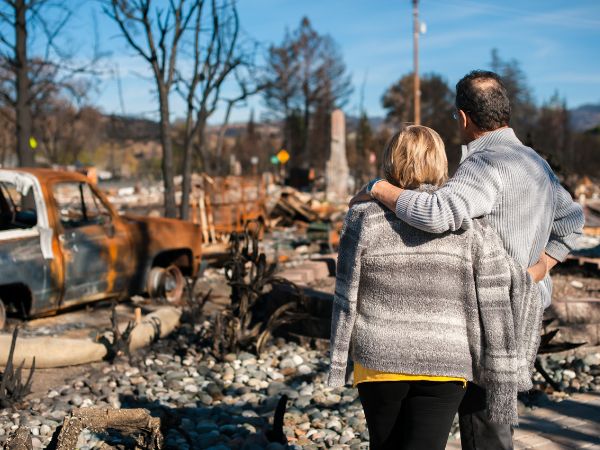Ah, Mother Nature! She’s unpredictable, often beautiful, but sometimes a real force to be reckoned with. When she strikes in the form of natural disasters, the aftermath can be devastating. That’s where the knight in shining armor, also known as insurance coverage, comes into play. This article will dive deep into the world of insurance coverage for natural disasters, helping you understand the ins and outs of staying financially protected when the unexpected happens.
What’s the Big Deal About Insurance for Natural Disasters?
Imagine this: you’re enjoying a peaceful evening at home, and suddenly, a wild storm hits. You might think, “I’ve got insurance; I’m covered,” right? Well, it’s not always that straightforward. Standard insurance policies have their limits, especially when it comes to natural disasters. This is where specific coverage for these catastrophic events becomes crucial.
Choosing the Right Coverage: Easier Said Than Done?
Absolutely! But fret not; we’re here to guide you through the maze. You’ll find that understanding your needs and the available options can make this process less daunting.
Understanding Different Types of Natural Disaster Insurance Coverage
Before diving into specifics, let’s get a clear picture of what we’re dealing with:
- Flood Insurance: Often requires a separate policy. Floods can happen anywhere, not just in high-risk areas.
- Earthquake Insurance: Another separate policy. Essential if you’re in quake-prone regions.
- Windstorm Insurance: Crucial in hurricane or tornado zones. Sometimes, it’s part of a standard policy, but check the fine print.
Why Isn’t This Stuff Included in My Standard Policy?
Good question! Standard policies typically cover events like fires or theft, but natural disasters? They’re a whole different ballgame due to their unpredictability and the extensive damage they can cause.
The Nitty-Gritty: What Does Insurance Coverage for Natural Disasters Actually Cover?
Now, let’s get down to brass tacks:
- Dwelling Coverage: This covers damage to the structure of your home. It’s the bedrock of your policy.
- Personal Property Coverage: This protects your belongings. Think furniture, electronics, and clothing.
- Loss of Use: If you’re temporarily unable to live in your home, this coverage helps with additional living expenses.
But Wait, There’s More!
Don’t forget about deductibles and policy limits. These can greatly affect your coverage and out-of-pocket costs after a disaster.
How to Choose the Right Insurance Coverage for Natural Disasters
Here’s where you need to put on your detective hat:
- Assess Your Risk: Are you living in Tornado Alley or a flood-prone area?
- Understand Policy Terms: Knowledge is power. Understand what is and isn’t covered.
- Compare Quotes: Don’t just settle for the first quote. Shop around.
Pro Tips:
- Review your policy annually.
- Consider additional living expenses coverage.
- Don’t underestimate the value of your belongings.
Common Misconceptions About Natural Disaster Insurance
Let’s bust some myths:
- Myth 1: “Flood damage is covered under standard homeowners’ insurance.” Nope, it’s not!
- Myth 2: “I don’t live in a high-risk area, so I don’t need additional coverage.” Better safe than sorry, my friend.
So, What’s the Reality?
Understanding the specifics of insurance coverage for natural disasters can save you a world of stress and financial burden.
FAQs
- Is natural disaster insurance expensive? It varies based on location, risk, and coverage amount. Generally, the higher the risk, the higher the premium.
- Can I get insurance right before a disaster strikes? Insurance companies often have moratoriums in place before natural disasters, so it’s wise to get coverage well in advance.
- Does disaster insurance cover temporary housing? Yes, most policies include coverage for additional living expenses if your home is uninhabitable.
In Conclusion
Insurance coverage for natural disasters might seem like a labyrinth of confusion, but it’s a necessary shield against the financial fallout of Mother Nature’s less pleasant side. Understanding your needs, doing your homework, and staying prepared will ensure that when the storm clouds gather, you’re as ready as you can be.
Remember, it’s not just about having insurance; it’s about having the right insurance. So, before you sign on the dotted line, make sure you’re well-informed and adequately covered. Stay safe and protected!

